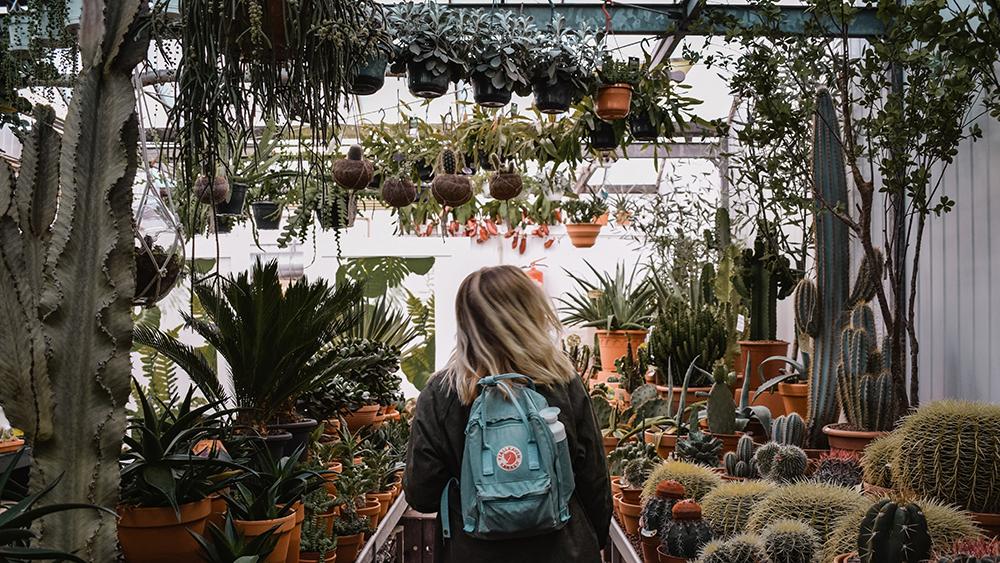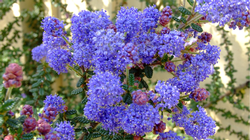How to Choose Plants

Thanks to Marin's mild climate, we can grow thousands of different plants. That's a good thing, but it can make shopping for plants an overwhelming experience. So many to choose from! Question is, which ones should you grow?
> Use our plant lists
> Considerations when choosing plants
> Tips for successful trips to the nursery
> Why plants matter
Use our plant lists
The UC Marin Master Gardener plant lists are a quick and easy way to choose plants like a pro. Click on the photos to learn more and see more plant images.
PLANTS FOR MANY SETTINGS
> PLANTS FOR BROWN THUMBS
> EASY CALIFORNIA NATIVE PLANTS
> TREES
> SHRUBS
> PERENNIALS
> GROUNDCOVERS
> GRASSES
> SUCCULENTS
> LAWN
> FERNS
> VINES
> BULBS
> HOUSEPLANTS
PLANTS FOR SPECIAL SITUATIONS
> DEER-RESISTANT PLANTS
> LAWN ALTERNATIVES YOU CAN WALK ON
> NO IRRIGATION ONCE ESTABLISHED
> PLANTS FOR BEES, BUTTERFLIES, HUMMINGBIRDS
> CLAY SOIL
> SHADE
> UNDER OAKS
> UNDER REDWOODS
> ON HILLSIDES
> HOT SUMMER LOCALES
> COOL COASTAL SETTINGS
> FALL COLOR
Considerations when choosing plants
Whether you use our plant lists or research plants yourself, there are a few decisions to make.
With a little planning, you can choose plants that meet your needs, match your garden's cultural conditions, minimize maintenance and problems, and benefit the environment.
FUNCTION: what do you want your plants to do?

• Provide privacy
• Screen an unsightly view
• Highlight an attractive view
• Define a space
• Cast shade
• Protect and modify wind
• Outline a path
• Direct traffic
• Provide food (for wildlife as well as humans!)
CULTURAL FIT: match your garden's conditions with what plants need
The most important step in growing a successful garden is assuring your garden's conditions meet the needs of your plants.
Sun - Full sun is 6+ hours per day, part sun is 5 to 6 hours, and part shade is 3 to 4 hours. If you have less than 3 hours of sun per day, consider plants for shade. Plants grown in too little or too much sun are more susceptible to problems.
Soil - Most plants prefer soil that drains well. Clay soil, common in Marin, can be amended to improve drainage. You can also choose plants that thrive in clay soil.
Microclimate - Consider conditions unique to your microclimate such as wind, frost, summer fog, or heat.
Setting - Some settings require specialized care and attention, such as gardening on a hillside or near oak or redwood
ECOLOGICAL BENEFIT: choose plants that contribute to a sustainable, Earth-friendly garden
California native plants protect and enhance Marin's unique biodiversity and are essential for attracting pollinators and beneficial insects. Some wildlife cannot survive without natives. Learn more about native plants, habitat gardening, and attracting bees, hummingbirds, and butterflies.
Herbs also attract natural enemies such as syrphid flies and green lacewings.
Low water plants conserve water and energy. Dry summers and drought are a reality in Marin. Consider replacing your lawn with plants that need little or no water, such as those from Australia, South Africa, Chile, and the Mediterranean. Plants from these regions share numerous summer-dry adaptations with California natives, including soil low in nutrients and leaves that are thick and leathery to resist dehydration or that are white, waxy, or held upright to minimize sun exposure.
Avoid invasive and treated plants
GROWTH HABIT & SIZE: find the right fit
Make sure the plants you choose will not outgrow their location or cause trouble years later.
Mature size -- Read plant tags closely. If you need a 6 foot hedge, avoid a plant that grows 20 feet tall. Overgrown plants create excess fuel for fire, block views, encroach on overhead utility lines, crowd neighboring plants, and create maintenance headaches.
Growth rate – Faster is not always better, especially when it comes to trees.
Plant characteristics – Plants with excessive leaf, flower, and fruit litter can increase maintenance and cause hazardous conditions on sidewalks, decks, and patios. This is especially true for trees. Learn more about choosing trees.
PEST & DISEASE TOLERANCE: avoid future problems

Read plant tags. A long list of possible problems is a red flag.
Choose disease and pest-resistant plants.
Choose resistant plants if deer are an issue in your garden. There are a surprising number of plants that deer find distasteful.
GENERAL TIPS
Stay local. When researching plants, stick with books and websites pertaining to the Bay Area or, even better, Marin County. Same for nursery shopping.
Visit gardens. Visit local parks, botanical gardens, nurseries, and even your neighbor's garden to see what's growing successfully.
Combine with care.
• Group plants with similar irrigation needs (hydrozoning).
• Grow plants in clumps to imitate nature and entice pollinators.
• Repeat plants throughout the garden to make it feel cohesive.
• Plants from the same general location (Australia, South Africa, California, etc.) often look good together.
• Plants with contrasting leaf color, shape, and texture often look good together.
Tips for successful trips to the nursery
Make a list. If there are plants you'd like to try, jot down the names and take it with you. To avoid confusion, use botanical names.
Plan ahead. Bring photos of your available garden space. Before you make a purchase, have a plan for where plants will go.
Shop locally. Local nurseries typically offer plants that work in our Mediterranean climate. Nurseries in out-of-town locations may not.
Read tags. Tags don't lie. If a plant needs shade and you have sun, you will be disappointed.
Double check. Search plants on your phone or tablet to learn more than what's on a tag.
Choose healthy plants
• Avoid plants with yellowing or brown leaves, blackened areas, holes, spots, mushy areas, or stickiness.
• Avoid plants with roots growing out the drainage hole, which could be a sign of a root-bound plant or one that has been in the pot too long.
• Avoid plants with weeds growing in the container. You don't want to introduce new weeds into your garden.
Go small. Choose smaller containers, especially for fast-growing plants. Smaller plants are easier to transplant and get established.
Choose plants without buds or flowers. They will transplant better.
What do plants do?
Simply put, plants make life on Earth possible.
Make the air we breathe
• Through photosynthesis, plants convert the carbon dioxide we exhale into fresh oxygen.
• Oxygen is kept in balance on the Earth solely due to plants.
Filter pollution from water and soil
• Residue from fertilizers and pesticides bind with soil particles. Plants help remove some of those chemicals before they enter waterways.
Lift water from the soil to the atmosphere so that our water cycle is uninterrupted
Regulate the Earth's temperature
Provide shade to buildings, cooling them and reducing energy costs
Sequester carbon dioxide
Beauty & biodiversity
Contribute to Marin's natural beauty and, more importantly, our unique biodiversity
Bare necessities
• Provide food and shelter for living things (including humans)
• Provide clothing
Provide medicine
• Plants are the largest source of essential vitamins; the body cannot manufacture them on its own.
• Three out of four of the top prescription drugs in the US started as plants, and 70% of new drugs in the past 25 years have been derived from natural sources.
Control erosion on hillsides
Rest & recreation
• Provide recreational opportunities
• Provide restful settings, reduced stress, and an improved quality of life
